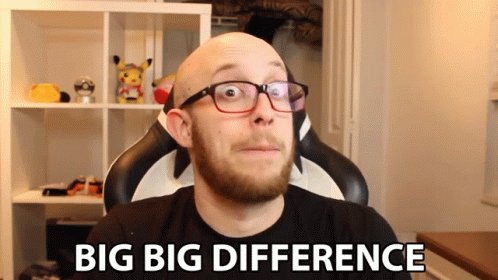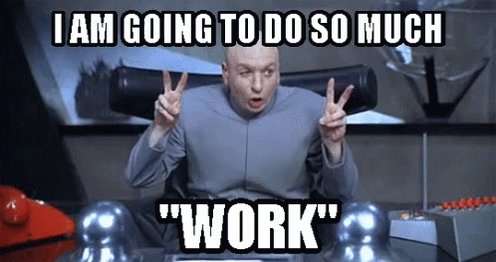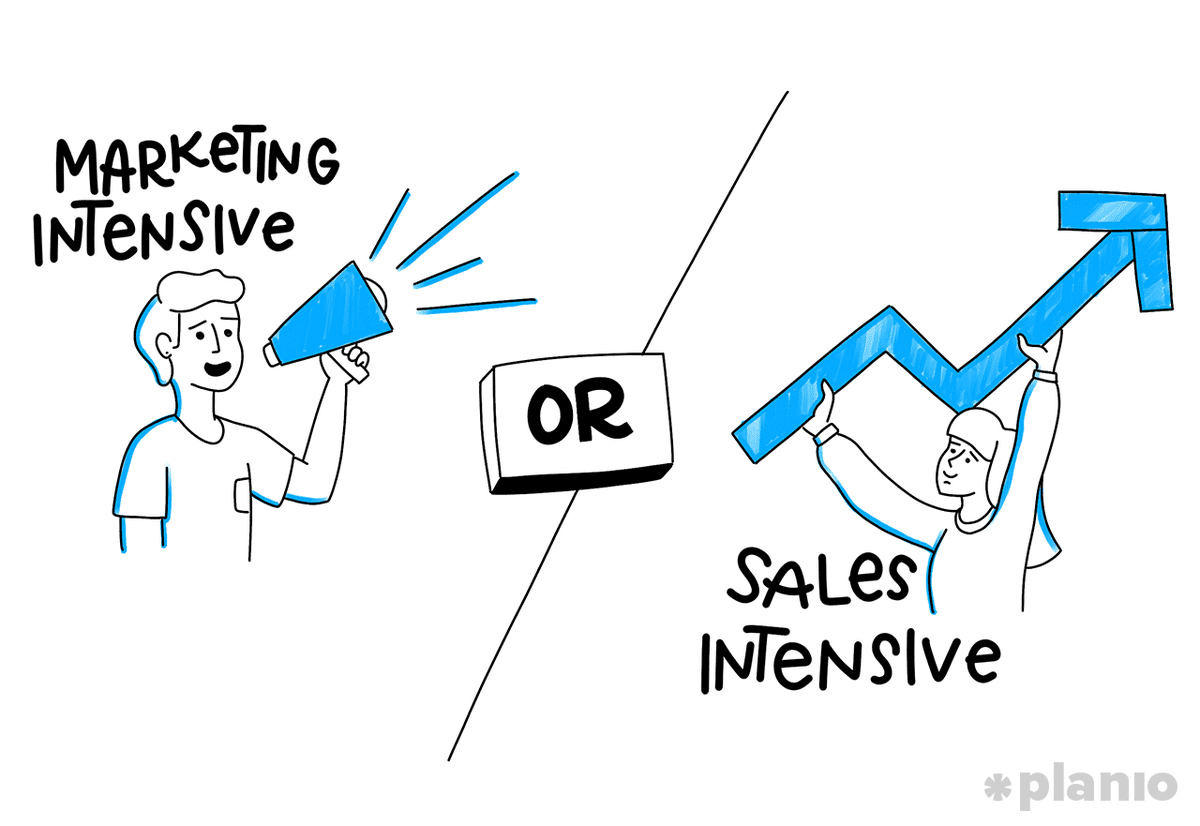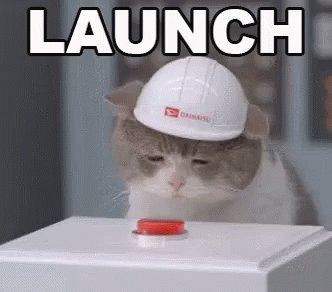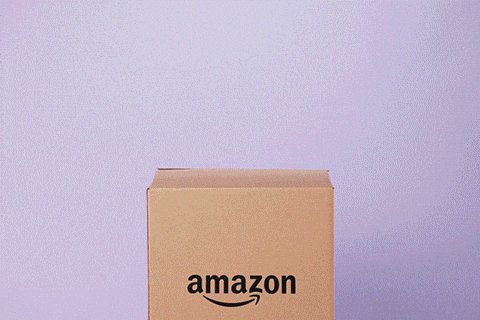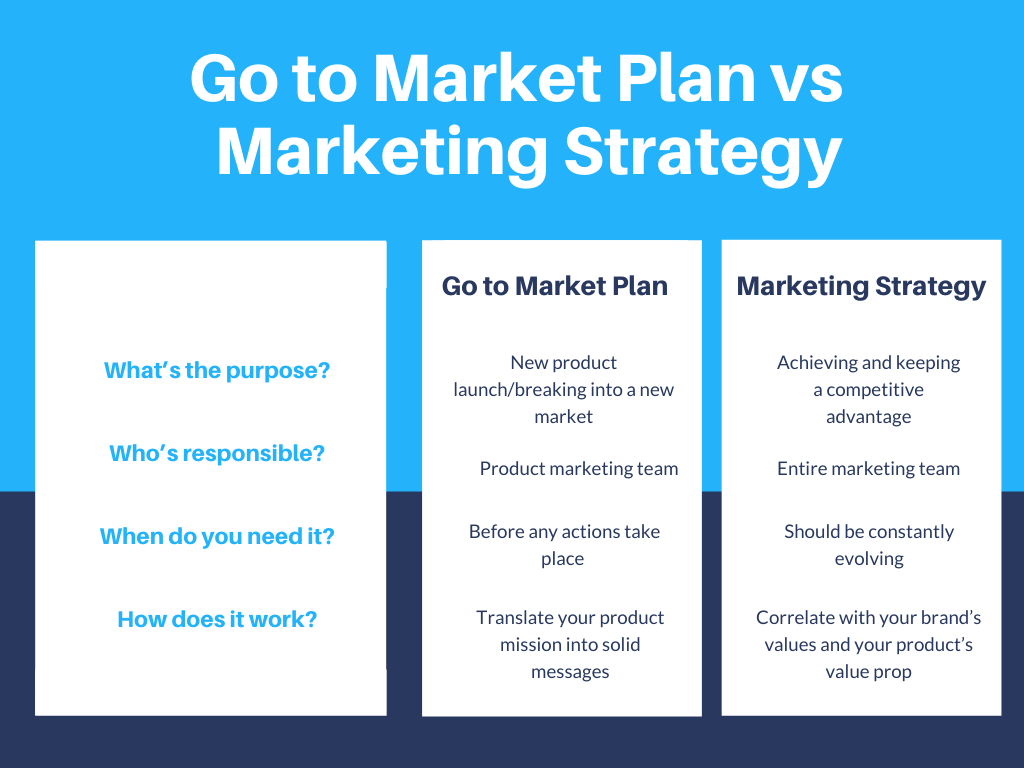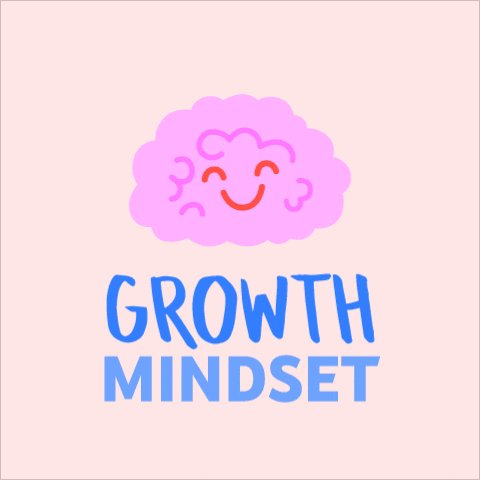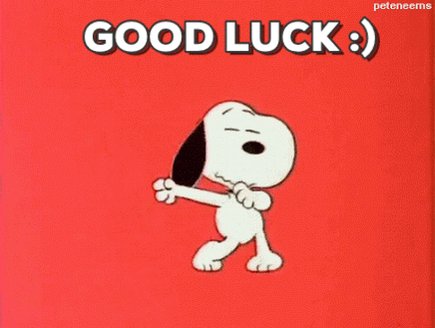Hey Guys! My name is Anna and I'm the Head of Marketing at Semrush. I'm super excited to be an author of this week and share my thoughts and insights on a Product Marketing topic. Stay tuned :-) pic.twitter.com/jdxV8FYUfD
and the plan for this week🥳
Mon: What is a Product Marketing Manager?
Tue: What is a PM strategy?
Wed: What is a PM toolkit?
Thur: How to measure the impact of PM?
Fri: PM and product success
Sat: Great PM campaigns
Sun: Final thoughts
#productmarketingg
What does a product marketer do? I love the following definition as it explains in the best way the role of product marketing – by looking at what product marketers do / before/ and / after/ product launches😎
According to Casey Winters, Chief Product Officer at Eventbrite, the role of a product marketer can be distilled down into three key responsibilities:
(1) deciding a soon-to-be-released product’s positioning and messaging
(2) launching the product and making sure users (in B2C) or customers and salespeople (in B2B) understand its value
(3) drive demand and usage of the product
Which important factors to consider while evaluating the potential role in the new company? pic.twitter.com/2deSdFnKOe
The best PMs I have met or worked with have had these three core competencies at the required level for the company they worked for:
(1) Core professional competencies required ( this topic will be covered in more details later )
(2) Emotional Intelligence
(3) Company fit
(2) Emotional Intelligence. It is being able to empathize with customers, partners, and colleagues. You shall have an ability to build strong relations and a keen sense of how to navigate both internally and externally.
Here are the four key traits of EI defined by Daniel Goleman:
(3) Company Fit. One thing can potentially guarantee your success - when you take your core skills and your personality traits and apply them to the right company
Product marketers and product managers have three things in common
(1) The customer is always at the center of their universe
(2) The great ones are invaluable - they can work effectively across the entire organization
(3) There is no one-size-fits-all description of their roles
And an awesome infographic pic.twitter.com/wXZr2URsmR
What is the difference between Product Marketing vs Product Management? Are you also sometimes get confused? pic.twitter.com/C2McRTh8zA
In short – the product manager is responsible for helping to create and define a new product. They own the problem. A product marketer is responsible for bringing it to market and putting it on the shelf. They are focused on marketing to customers, not prospects and leads.
Product marketers and product managers have three things in common
(1) The customer is always at the center of their universe
(2) The great ones are invaluable - they can work effectively across the entire organization
(3) There is no one-size-fits-all description of their roles
Here is a great article on this topic
drift.com/blog/product-m…
And a very nice infographic 😍 pic.twitter.com/jJiDxEBBO2
So what is the main goal of a Product Marketer? It is to establish information exchange and collaboration between: the product team and everyone else inside (marketing, sales, and support teams) and outside the company (potential and existing customers, competitors). pic.twitter.com/7qycRr8KiW
How a Product Marketer differs from a Marketer? pic.twitter.com/pN3m2HQkzO
The product marketer is more of a strategist, while the marketer is more of a tactician.
Most often, they work at different stages of the marketing funnel.
Marketing. The Marketing Manager is responsible for the top of the funnel, which is brand awareness and engagement. The main indicator of the effectiveness of the marketing team is either leads or registrations.
Product Marketing. The work of a product marketer becomes visible when the user comes to the product. PM Manager explains how to solve the user's problem with the help of the product. This is all about the educational content, good onboarding, great scripts for the sales team.
What does a PM do prior to the Product Launch? pic.twitter.com/cEbbm1ij2o
Here are major areas that a PM closes prior to the product launch:
Basically, by studying the market, a PM knows how to package a product and how to present it in order to achieve business goals, and helps other teams (primarily sales, marketing, and support) to act according to the framework and strategy PM has created.
Within each of these blocks, there are a lot of tasks:
How to become a Product Marketer? pic.twitter.com/B1ZJJ5Jovl
According to the State of Product Marketing Report 2020, 44% of product marketers said they had a role in the marketing team before moving into this position, including content marketers, CMOs, and brand managers.
At the same time, 12.5% moved from product positions such as Head of Product, VP of Product Management, or Product Manager.
Here is the full report
productmarketingalliance.com/state-of-produ…
Hello Team! I'm back 🥳 and today we'll be talking about Product Marketing Strategy 💪pic.twitter.com/4C4ERUfXrcc
But let's recall what we've talked about before:
product marketers think about how to drive demand and usage of the product and its features by focusing more on marketing for customers than prospects and leads pic.twitter.com/NRGkR6PUkw
What do you think is the most important in the Product Marketing Strategy? 😎 pic.twitter.com/iq8y4ERMcU
So what is the Strategy?
Strategy is a general plan to achieve one or more long-term - Wikipedia
So we need to have a plan..... pic.twitter.com/lFcZ0sgs39
The Ansoff Matrix - a core business strategy tool.
Ansoff suggested that there were effectively only two approaches to developing a growth strategy:
When combined it delivers four strategic options, each with a differing level of risk.
This strategy is only possible where markets are still growing, or where organizations are prepared to use other elements of the marketing mix (such as price discounting and additional promotional activity) to penetrate the market at the expense of competitors.
2. Product Development - is to develop new products for existing markets (customers). Here the ‘Product’ and ‘Promotion’ elements of the marketing mix will change (as a minimum), so the risk is higher than market penetration.
The success of this strategy is dependent on the organisation being able to effectively conduct research and insight into their customer and market needs as well as their own internal capabilities and competencies for driving innovation.
3. Market Development - is considered to be risker than market penetration as it can be difficult to understand the complexities of new markets. Key changes in the marketing mix are to be ‘Place’, with consideration of new channels and routes to market, as well as ‘Promotion’.
4. ‘Diversification’ - is developing new products for new markets. This is seen as the riskiest strategy of all four, as the organization is moving into an unfamiliar market. However, this risk could have the potential to gain the highest returns.
What is the Product Marketing Strategy?
It shall effectively bring your Product to the Market. pic.twitter.com/ze6iN2u21y
PM Strategy helps to identify the right product and put it in the right consumer's hands via:
What is a Product Marketing Strategy?
Pre-launch phase:
- Customer Development
- Positioning & Messaging
- Sharing Positioning & Messaging inside the company
- Set your target
- Launch plan
Launch phase:
- Product Launch
Post-launch phase:
Make customer development: to define the target market and understand the potential customer
Create Positioning & Messaging: to turn learnings into action. This comes in the form of a positioning document or a list of key messages
Share Positioning & Messaging: to make sure that everyone at the company knows it.
Set your target: to define the final marketing target
Prepare launch plan: product marketers own the creation of a launch plan, which typically involves various teams from across an organization, including traditional marketing, sales, support, and more.
Actual Product Launch: this is a defining moment for a product marketer.
Post-Launch: to measure the success of your launch plan by monitoring customer and internal feedback, tracking the performance of key metrics
What is the difference between marketing strategy and go-to-market strategy?
Marketing strategy focuses on how a company can reach an identified market over time.
A go-to-market strategy focuses on how to bring new products or services to market. pic.twitter.com/L9mhT96x4d
A go-to-market (GTM) strategy is created to cover new product launches:
Important Difference between:
Marketing Strategy <> Go-to-market strategy
GTM strategy is merely a component of the overall marketing strategy that aims to lead prospects further down the funnel pic.twitter.com/scX2TnVAMj
The Key Differences:
2. A marketing strategy is created to ensure that a business will manage to keep up with trends. It can include marketing actions such as an SMS marketing strategy. Still, it must include a detailed distribution plan and be created around the brand’s target audience.
3. A marketing plan aims to attract an audience that will appreciate the value of the brand as a whole and will manage to outshine the competitors.
4. GTM strategy is a little more short-lived in the sense that it will serve the purpose by approaching the segment of the audience that will be interested in a specific product.
5. While a GTM strategy may include components of a marketing strategy — distribution channels, for example, or a video content plan — it often is highly targeted towards a specific buyer persona. In the end, it aims to ensure that a product outshines the competitors’ product.
6. GTM strategies are generally related to a product launch, a new benefit, or anything that the pre-existing audience has not experienced yet. Plus, as all marketers know, new launches have specific timelines.
7. Since a GTM strategy covers those launches, marketers create plans that last a specific time period. In this fixed timeline, marketers need to achieve particular goals.
8. On the contrary, a marketing strategy is an ongoing process of re-discovering, re-assigning, and reviewing. To better understand the difference between the two, think of a marketing strategy as a marathon, while a GTM strategy as a sprint.
Marketing strategy = marathon
Go-to-market strategy = sprint pic.twitter.com/BscsLdWE0N
Everything you need to know before you write your go to market strategy:
⚡️Product-Market Fit
⚡️Audience and buyers
⚡️Competitive landscape
⚡️Distribution
⚡️Is your product marketing-intensive or sales-intensive?
Product-Market Fit. What problems does your product solve for people and how have you validated the need?
Audience and buyers. Who is going to buy your product, what do you know about them, and how does your strategy support them?
Competitive landscape. Who else is in the market and how are they going to react to you waltzing in?
Distribution. How and where will you distribute your product?
Is your product marketing-intensive or sales-intensive?Yhe more marketing muscle you flex the less sales you should need, and vice versa.
Is your product marketing-intensive or sales-intensive?
(Will your customers respond better to marketing or sales?) pic.twitter.com/zkc3bXkHRN
One way to figure this out is to look at a few factors:
Price: How much selling do you need to do? Higher prices and larger economic decisions for customers are better suited to sales than marketing.
Market size: Are you going after a large pool of customers where direct sales would be inefficient? Or a small group who need more attention before they’ll make a decision?
Product complexity: Do you need a salesperson to explain the features and benefits to potential customers? Or is it self-explanatory enough that people who buy it can start using it right away?
B2B or B2C: Are you selling to companies or to individuals? In most cases, individuals will be better suited to marketing campaigns, while companies need to be sold to.
Relationships: Does your success rely on building a long-term relationship with a customer? Sales helps you connect more regularly with people, while marketing puts you in front of people when they need you.
9 Steps to Build a Go To Market Strategy
( Framework and Examples)
A go-to market strategy serves a couple of purposes:
⚡️It clarifies why you’re launching your product, who it’s for
⚡️How you’re going to tackle the never-easy job of getting them to engage with and buy it. pic.twitter.com/rAd8g08RgP
Here is an awesome post that fully covers the topic:
plan.io/blog/go-to-mar…
1. What is your business case?
Why are you launching this product right now and what do you hope to gain from it?
2. Define your market strategy:
Value props
Positioning
Messaging
Sales and support materials
Customer journey
Personas
Use Cases
3. Lock in your pricing strategy
How much are you going to charge for your product and why?
4. Create your external marketing plan
What sort of external marketing are you going to use to tell people about your new product?
Branding
Lead generation
Content
Marketing site
Events, ads, and PR
5. Specify your sales strategy and supporting materials
How are you going to empower salespeople to help you get a piece of the market?
Tools and resources
Client acquisition
Training support
6. Sync up with support
How will you support new users and customers with questions or issues?
Tools
Onboarding and support
Retention strategies
Satisfaction measurement
7. Know where this product fits in your overall roadmap
What priority will this new product have over other features/products/initiatives?
Priority for development team
Market feedback
Employee feedback
8. Decide on success metrics
What is the main purpose of this new product and how will you know if it is a success?
Every go to market strategy needs a success metric—something you can look at and judge whether or not your product is doing what you wanted it to do.
9. Clarify your ongoing budget and resource needs
How will you continue to support this product?
Nail Product Launches 😎
🎈Do Not Promise Features Or Launch Dates
🎈Build up a beta group among power users. They are forgiving of screw-ups
🎈Make sure what you’re launching does have an impact on users
🎈 Have a plan if you’re messing with any core features or workflows pic.twitter.com/6NoIGEeNjc
How to make sure what you’re launching has an impact? You can use Work Backwards Process by Amazon
They write the press release first – and only then develop a product. If the press release isn’t compelling, then they know that the product isn’t likely to be received well. pic.twitter.com/aH8uW1zxQt
Do Not Promise Features Or Launch Dates!!!
Once you set expectations, customers expect you to meet them.
Instead, tell customers what themes and problems you’re prioritizing by directing them to your public roadmap. 📌
Always keep in mind CAC as an important part of your pricing strategy.
⚡️CAC - > сustomer acquisition cost
If it costs you more to acquire customers than you’re getting from these customers, you have a serious problem. Your ability to monetize your customers is critical. pic.twitter.com/pPtWapO6tI
Hey Team!
I've found this image on my laptop that helps to further illustrate yesterday's topic - What is a Product Marketing Strategy? pic.twitter.com/ifHLG2nIyI
Hey Team!
So today is a super exciting topic 😎
⚡️ Product Marketer Toolkit pic.twitter.com/BxmEuxXjg4
What about soft skills to obtain? Is there anything missing from the list? 🎈
📌Prioritization Skills
📌 Communication skills
📌 Ability to Thrive in Ambiguity
📌 Passion for Solving Customer Problems
📌 Strategic Thinking Skills
📌 Ability to Act Decisively
📌 Creativity twitter.com/pmmunderhood/s…
Ups. It looks like I accidentally deleted a Tweet.
So one more time -:)
Three most important Hard Skills to obtain
(besides imporatnt marketing knowledge ):
🎈Presentation Skills
🎈Writing Skills
🎈Business Basics pic.twitter.com/qYc0ncJgKf
Ups. It looks like I accidentally deleted a Tweet.
So one more time -:)Three most important Hard Skills to obtain
(besides imporatnt marketing knowledge ):🎈Presentation Skills
🎈Writing Skills
🎈Business Basics pic.twitter.com/qYc0ncJgKf
😎 and I believe that Business Basics is the most important:
⚡️It is a necessary skill for anyone in a leadership position
⚡️ This is one of the reasons product marketers differentiate themselves from other positions on the marketing team twitter.com/pmmunderhood/s…
Five basic SaaS business metrics to understand
( there're dozens of them to know ):
⚡️Customer Lifetime Value (CLTV)
⚡️Customer Acquisition Cost ( CAC )
⚡️Monthly Recurring Revenue (MRR)
⚡️Annual Recurring Revenue (ARR)
⚡️Churn Rate pic.twitter.com/cXigpyHcGJ
Customer lifetime value (CLV) is a measure of the average customer's revenue generated over their entire relationship with a company
Customer Acquisition Cost, or CAC, measures how much an organization spends to acquire new customers. CAC – an important business metric – is the total cost of sales and marketing efforts, as well as property or equipment, needed to convince a customer to buy a product or service
Monthly Recurring Revenue (MRR) is the predictable total revenue generated by your business from all the active subscriptions in a particular month. It includes recurring charges from discounts, coupons, and recurring add-ons, but excludes one-time fees.
Annual Recurring Revenue, or ARR, shows the money that comes in every year for the life of a subscription (or contract). More specifically, ARR is the value of the recurring revenue of a business's term subscriptions normalized for a single calendar year
Comparing CLV ( or LTV ) to customer acquisition cost ( CAC ) is a quick method of estimating a customer's profitability and the business's potential for long-term growth. pic.twitter.com/jWsszCR4QJ
Here is the list of marketing tools categories that I find the most important. Please add your category if it is missing on the list:
⚡️ Social Media Tools
⚡️ Website Analytics
⚡️ Market Research
⚡️ Email marketing
⚡️ Conversion optimization tools
⚡️ Design tools
Here is the list of my favourite Free Marketing Tools:
🎈Google Alerts for mentions monitoring
🎈Google Analytics for website analytics
🎈Unsplash for beautiful photos
🎈Canva for great design
🎈Semrush Social Media toolkit for SMM
🎈Trello for teamwork
🎈MailChimp for emailing pic.twitter.com/ViJf2VXKLC
What items are the most important in Product Marketing Toolkit?
I believe that first and foremost is Competitive and overall Market Research. You need to know the playing field and other players that are or could be around. pic.twitter.com/cMjn7tVMK5
What items are the most important in Product Marketing Toolkit?
I believe that first and foremost is Competitive and overall Market Research. You need to know the playing field and other players that are or could be around. pic.twitter.com/cMjn7tVMK5
There're four basic information packages that will inform your product marketing strategy:
⚡️ Market Analysis – which profiles your market
⚡️ Competitor Analysis – which profiles your competitors
⚡️ Customer Analysis – customer research
⚡️ PEST Analysis – more information below twitter.com/pmmunderhood/s…
📌 PEST Analysis – which examines the Political, Economic, Social and Technological
the environment
What is market segmentation? 😎
📌 Market segmentation is the process of dividing a market into groups of customers that
have somewhat different needs or preferences.
and PRICING💲
To be successful, you must offer your target market a product whose benefits are slightly greater than its cost. pic.twitter.com/qgmSyLxIMf
and PRICING💲
To be successful, you must offer your target market a product whose benefits are slightly greater than its cost. pic.twitter.com/qgmSyLxIMf
Are we supposed to look at the value of an individual product or of all products as a package ⁉️
❗️You need to focus on one product at a time twitter.com/pmmunderhood/s…
What does your product have to offer?
📌The core product
📌 The actual product
📌 The augmented product pic.twitter.com/Bje1kN1KVD
1. The core product is the reason for which
customers buy your service. It is the need that you
are fulfilling or the benefit you are providing.
2. The actual product is what customers buy. This
includes all of the product‘s design features as
well as its packaging.
3. The augmented product is the way customers
receive what they are buying. This includes how
the product is delivered and serviced.
So, what is the Value Position?
Here is the triangle that portrays value as a balance between three elements:
📌a fair price
📌a quality product and a convenient
📌service-oriented environment pic.twitter.com/HxyH3cPjCh
So, what is the Value Position?
Here is the triangle that portrays value as a balance between three elements:
📌a fair price
📌a quality product and a convenient
📌service-oriented environment pic.twitter.com/HxyH3cPjCh
Answer the following questions:
How do you price my product?
❗️There are basically three methods for pricing your product:
💲Cost-based
💲Competition/Market-based
💲Demand-based pic.twitter.com/N9tx1MY3nn
Cost-based: prices are based on the cost of the product plus a margin
Competition/Market-based: prices are based on the prices charged by competitors
Demand-based: prices are based on an assessment of the value of the product to the customer
What are the most common pricing mistakes?
😎1. Viewing pricing as being entirely cost determined
🤪2. Not revising the price often enough to keep it in line with market changes.pic.twitter.com/Vv4ZI7poiBB
What are the most common pricing mistakes?
😎1. Viewing pricing as being entirely cost determined
🤪2. Not revising the price often enough to keep it in line with market changes.pic.twitter.com/Vv4ZI7poiBB
😇 3. Setting the price in isolation of the rest of the marketing mix.
😌 4. Not varying the price sufficiently enough for different product types and market segments. twitter.com/pmmunderhood/s…
and... what about product-market fit?
Product-market fit is in place when the company’s target customers are buying, using, and telling others about the company’s product in numbers large enough to sustain that product’s growth and profitability. pic.twitter.com/kvIl2HGyNa
and... what about product-market fit?
Product-market fit is in place when the company’s target customers are buying, using, and telling others about the company’s product in numbers large enough to sustain that product’s growth and profitability. pic.twitter.com/kvIl2HGyNa
Here are 5 steps to achieve Product Market Fit:
❗️Customers do not buy products.
❗️They buy solutions to problems.
❗️If a competitor offers a better solution,
even with a completely different
product, customers will defect to the
better solution. pic.twitter.com/4HSRVyhMnu
There are five core components of a product marketing message:
- The brand name
- The tagline
- The unique selling proposition
- The benefit statement
- The positioning statement
⚡️⚡️⚡️⚡️⚡️ pic.twitter.com/AnTv5eucuU
😎 External Marketing Plan toolkit:
It is especially important if your product is marketing intensive ❗️
Hey Team!
Today is Thursday, and the topic of the day is:
How to measure the impact of Product Marketing?
It is very utilitarian but yet very very exciting..... pic.twitter.com/VWdeJx2fcv
Is there anything special about measuring the impact of Product Marketing?
📌product marketing becomes more data-driven than before
📌there're dozens of analytics tools out there
📌it is possible to track every kind of metric
📌you can track every single thing a user does
Measuring Product Marketing efforts:
⚡️ PM is an extremely diverse function
⚡️ It serves many different stakeholders
⚡️ Metrics can differ depending on the industry and the size of the business
⚡️It is important to identify which metrics are key to the success of your business pic.twitter.com/6JtTd5d2Wc
Super Important Business Metrics:
‼️ Revenues
‼️ Product Usage
‼️ Frequency of High-Value Actions
Revenue: break this goal down into acquisition targets and upsell/retention/cross-sell targets. It can also be broken down into average revenue per user (ARPU)
Product Usage: it directly impacts revenue. This metric is also important because when you understand how and when consumers are using a product, it becomes possible to determine things like how to improve retention rate and where the upsell/cross-sell opportunities are.
Frequency of High-Value Actions: this is a great metric that every business can customize to make their own. Instead of tracking generic metrics like DAU or MAUs, companies should identify actions that maximize value and directly impact business metrics.
For instance, Adding to Cartâ - might be one such action for an eCommerce business. Sign-ups, free trials, and demos are some other high-value actions. Every product marketer needs to figure which are these high-value actions and then track them over time.
Growth Metrics are the metrics especially important for high-growth companies that want to stay on a sustainable growth path. pic.twitter.com/ZmVzfbeYfH
Super Important Growth Metrics:
🎈Customer Lifetime Value (CLTV)
🎈Close Rate
🎈Average Cost per Lead
🎈Average Contract Value
🎈Customer Acquisition Cost
CLTV: the higher the CLTV over time, the more a customer is spending on your product. When CLTV declines, it can be a result of competition or discounting policy. When the CLTV of competitors is declining, it could mean that the product category itself is in a de-growth phase
Close Rate: this refers to the rate at which qualified leads turn into paying customers. A higher close rate means that product marketing is both efficient and cheap. If the rate is too low, it means that sales enablement is an issue.
‼️ For early-stage companies, it could also mean that the product-market fit is not there yet. While in general, a higher close rate is better, beware of close rates that are too high. It could indicate that your pricing is too low.
Average Cost per Lead: This metric naturally helps you keep an eye on the cost of lead generation. The idea is to increase your close rate (which means improving lead quality) while keeping your average cost per lead as low as possible.
Average Contract Value: this is an important metric to track, especially when your transaction size is not fixed. It will help you determine whether you're unit-economics positive and are on track to sustainable growth.
Customer Acquisition Cost = CAC
📌CAC measures the cost of acquiring a customer all the way from the awareness stage up to closing the sale.
Naturally, the CAC needs to be kept as low as possible, but this is usually in relation to the Customer Lifetime Value. pic.twitter.com/jJtuYLHn8L
The good ratio for SAAS is as minimum as
CAC to LTV= 1:4
then you have a healthy unit economic
Hey Team! Today's topic is How to measure Product Marketing Impact? pic.twitter.com/xDWo3fylO1
How shall you measure Product Marketing Impact?
📌 Product marketing’s main goal is sign-ups
📌 Almost as frequently mentioned was active product usage and paid activations
📌 Churn reduction and upgrades are usually quite a bit less frequently as primary goals
What is the primary goal of product marketing? pic.twitter.com/du83VDAtsY
Hello team and Happy Saturday!
📌 Today we're talking about an exciting topic - Great Product Marketing Campaigns & Examples
There're basically three main questions that you need to ask yourself before starting figuring out any campaign in more detail:
⚡️What is the right message to win over customers?
⚡️Which customer segments should I be targeting?
⚡️Which mediums should I be using to maximize ROI?
Here is a typical campaign cycle to illustrate the entire preparation and execution process😃 pic.twitter.com/YHCljkHhkN
The image is from here:
proofpositioning.com/marketing-math…
Product: Select a product or service that you want to promote
Target: How many target market segments do you have? This can vary widely depending on your business.
Message: The actual number of possible messages you can communicate is infinite but typically marketing and leadership get together and make a shortlist and pick one or two to roll with.
Medium: The number of marketing mediums is really countless, anything from a simple email drip campaign to Snapchatting and running Facebook Live while giving hot air balloon rides at an industry convention.
Invest & Execute: Once you and your team have selected which product, target market, message, and medium you are going to use all you have to do is organize, invest and execute your campaign.
Measure: The last but not the least step is to measure the effectiveness of this campaign.
📌Keep Your Campaigns Clear
Clear purpose, messaging and goals are above creativity.
There is no need for creativity just for the sake of creativity. pic.twitter.com/pKlJ3PgFO0
Marketing Campaign: Strategy vs. Plan
⚡️Think of the strategy component of your marketing campaign as a destination you’re wanting to reach
⚡️Before you can know how to get there you need to know where you’re going
Marketing Campaign Strategy should identify 📌
Objective: where you want to get to
Purpose: why you want to get there
TA: Who do you want to connect with along the way
Budget: How much it’ll cost to get there
Timeline: When you plan to get there
KPI: What success looks like
Marketing Campaign: Strategy vs. Plan
⚡️Think of the strategy component of your marketing campaign as a destination you’re wanting to reach
⚡️Before you can know how to get there you need to know where you’re going
If the strategy is akin to the destination, then the marketing campaign plan is your roadmap for getting there.
The marketing campaign plan lays out how your strategy will be executed. twitter.com/pmmunderhood/s…
Marketing Campaign Strategy should identify 📌
Objective: where you want to get to
Purpose: why you want to get there
TA: Who do you want to connect with along the way
Budget: How much it’ll cost to get there
Timeline: When you plan to get there
KPI: What success looks like
Marketing Campaign Plan should identify 📌
Tactics: What needs to be done
Activities: How should it get done
Responsibilities: Who will do what
Deadlines: When the activities need to be done
Budget: How much to spend on what
Metrics: How success will be measured twitter.com/pmmunderhood/s…
Components of a Marketing Campaign 😎 pic.twitter.com/VK8DaQUJZa
Сlear structure of your Marketing Campaign Strategy is very important pic.twitter.com/k1Q8otbOpF
In the summer of 2020, LEGO® launched a marketing campaign for their new product:
📌 Braille Bricks by LEGO®
Designed to help children who are blind or visually impaired learn the Braille system of reading and writing,
Marketing Campaign for Braille Bricks by LEGO®.
This launch was driven by a strategic, well-coordinated marketing campaign that included:
⚡️a dedicated website
⚡️video
⚡️press releases
⚡️media coverage/PR
⚡️social media
⚡️ads
⚡️webinars
and more.
KPIs for marketing campaigns should tie back to their objective and purpose.
If your objective is to promote a new product or service, your KPI might be “X amount in sales revenue.” And if your purpose is something like LEGO’s .....
...to help blind and visually-impaired children learn Braille in a fun, playful, engaging way — then you might have a KPI around customer satisfaction, the share of voice, and/or social engagement.
Spotify Wrapped is a dedicated, infographic-like page the company offers listeners at the end of every year.
Another amazing campaign is made by Spotify
Spotify Wrapped – Your Musical Decade in Review
It is the 2019 campaign in which Spotify used a nostalgic approach to the “year in review” concept. pic.twitter.com/gG5KyNQW7B
Spotify not only shared the music that was popular over the last decade, but the stats around what music made an impact on individual listeners. They included shareable images of this data so people could post online and share the music that “defined their decade.”
Spotify checked all the boxes here by delivering a product experience that was centered around listeners and perfectly timed for the market. They’ve also built hype and anticipation around Spotify Wrapped at the end of every year.
Any “great product marketing campaigns” list would have Apple on the list.
It is just because Apple combines the best of everything:
⚡️A seamless web experience
⚡️Copy that nails it every time
⚡️Comprehensive product information pic.twitter.com/w082psk6FE
Apple knows who their customers are, what drives them, what pains them, and what they want now.
They translate that knowledge into innovative products and marketing that focuses on benefits versus features.
To make the right campaign you need to know:
⚡️who your customers are
⚡️what drives them
⚡️what pains them
⚡️and what they want now.
Then you need to translate that knowledge into innovative products and marketing that focuses on benefits versus features. pic.twitter.com/3UMzcOpj1Q
Translate your customer knowledge into innovative products and marketing that focuses on benefits versus features. pic.twitter.com/xibtpYJYiO
Here is one of my favorite campaigns from 2012
Google wanted to show that the choice of browser is an important choice and they came up with a nice branding campaign focusing on the experience
and storytelling - “The web is what you make of it” - a quite innovative for the time pic.twitter.com/9JlxbtOSvA
Instead of using the standard rational approach and focusing on product functionality with emphasis on security, ease of use, and performance.....
Because nobody wakes up in the morning and says: “I urgently need a new browser!”
They amazingly used:
What is the foundation of the creative campaign?
📌 Creative Idea
📌 Focus on digital and social virality
📌 Brand storytelling
📌 Use of technology
📌 Play with news and social agenda
What is the foundation of the creative campaign?
📌 Creative Idea
📌 Focus on digital and social virality
📌 Brand storytelling
📌 Use of technology
📌 Play with news and social agenda
❗️But creativity only makes sense if your customers are ready and are willing to accept it.
By reaching out to the audience on an emotional level, versus rational, you increase engagement: 6x more purchases, 12x more referrals, 5x more likely to forgive the brand for a mistake. twitter.com/pmmunderhood/s…
What is the foundation of the creative campaign?
📌 Creative Idea
📌 Focus on digital and social virality
📌 Brand storytelling
📌 Use of technology
📌 Play with news and social agenda
Ask 7 Questions before implementing creatives in your strategy:
The email marketing campaign for email marketing platform Hey. They used humanized messaging to connect with the target audience and create action. pic.twitter.com/RF4Beo1ScH
On the main home page, you see the message: Email is still an incredibly powerful tool – but email marketing needs to change.
They used the power of exclusivity to drive sign-ups. People were ready to engage and tell their own stories around email.
Social proof and customer voices to highlight and explain their product’s value.
Happy Sunday!
Thank you guys for staying with me for a whole week.
The Product Marketer role is indeed a very exciting one, being on the front of the business success. I wish you great ideas, exciting projects, and great products to work with 😍
I would love to share a few fundamental articles in different aspects of the business 😎 pic.twitter.com/fKavt8sIEu
Very insightful product management stories by Sam Lessin, VP of product development at Facebook
kleinerperkins.com/perspectives/p…
Everything about the Ansoff Model matrix that helps marketing leaders identify business growth opportunities
smartinsights.com/marketing-plan…
The Essentials of Theory U
leadershipnow.com/leadingblog/20…
The best post on How to Calculate CAC by Andrew Chen
andrewchen.co/how-to-actuall…
3 SaaS Marketing Themes For 2021
saasmarketer.io/3-saas-marketi…
The Stacey complexity model. It helps you to understand uncertainty in a project.
scrum-tips.com/agile/stacey-c…
Alex Schultz on Growth youtube.com/watch?v=n_yHZ_…
CEO Netflix presentation
slideshare.net/mobile/reed200…
All about Nudge Concept thttps://bloombergcities.medium.com/explainer-what-is-a-behavioral-nudge-f32150149deb
Building a Growth Framework Towards a $100 Million Product
brianbalfour.com/essays/hubspot…
Really nice books on Strategy, Business, and Management #1
📌 Lean Startup
📌 Contagious
📌 Predictably Irrational
📌 From Impossible to Inevitable
📌 Hard things about hard things
📌The Design of Everyday Things
📌 Who
📌 Thinking in Systems
📌 How cool brands stay hot
Really nice books on Strategy, Business, and Management #1
📌 Lean Startup
📌 Contagious
📌 Predictably Irrational
📌 From Impossible to Inevitable
📌 Hard things about hard things
📌The Design of Everyday Things
📌 Who
📌 Thinking in Systems
📌 How cool brands stay hot
The second part of list #2:
📌Sprint
📌The Four Steps to the Epiphany
📌Innovation Dilemma
📌Product-Led Growth: How to Build a Product That Sells Itself
📌 Viral Loop twitter.com/pmmunderhood/s…
- https://www.drift.com/blog/product-marketing-and-product-management/
- https://productmarketingalliance.com/state-of-product-marketing-2020/
- https://plan.io/blog/go-to-market-strategy/
- https://discover.mixpanel.com/rs/461-OYV-624/images/2019-Mixpanel-Product-Benchmarks-Report.pdf
- https://proofpositioning.com/marketing-math-the-odds-of-getting-your-campaign-right/
- https://www.legobraillebricks.com/about
- https://www.kleinerperkins.com/perspectives/product-management-stories-sam-lessin/
- https://www.smartinsights.com/marketing-planning/create-a-marketing-plan/ansoff-model/
- https://www.leadershipnow.com/leadingblog/2018/04/the_essentials_of_theory_u.html
- https://andrewchen.co/how-to-actually-calculate-cac/
- https://www.blissfully.com/saas-trends/2020-annual-report/
- https://saasmarketer.io/3-saas-marketing-themes-for-2021/
- https://www.scrum-tips.com/agile/stacey-complexity-model/
- https://www.youtube.com/watch?v=n_yHZ_vKjno&app=desktop
- https://www.slideshare.net/mobile/reed2001/culture-1798664
- https://brianbalfour.com/essays/hubspot-growth-framework-100m



